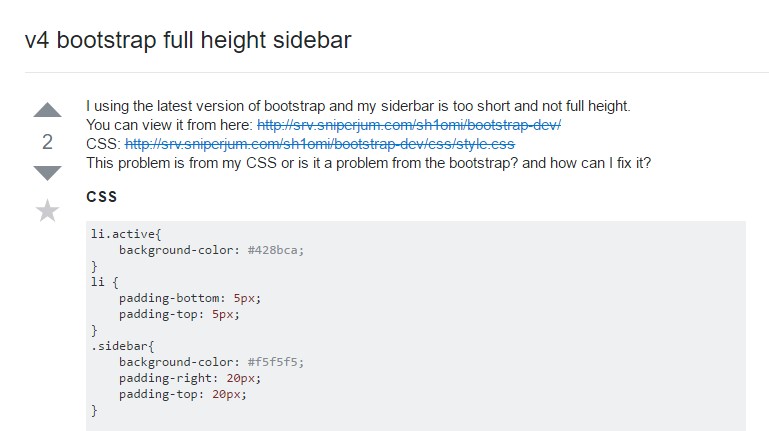Bootstrap Sidebar Submenu
Introduction
Around the majority of the web pages we recently notice the material stretches from edge to edge in width with a beneficial navigating bar just above and just conveniently gets resized when the defined viewport is achieved so that practically the showcased content fluently implements the entire width of the webpage accessible. Even so at a certain events the aimed objective the pages need to serve require together with the fluently resizing material area an additional component of the provided display width to get assigned to a still vertical element with some web links and web content in it-- in shorts-- the well-known from the past Bootstrap Sidebar Toggle is required. ( click this)
Efficient ways to utilize the Bootstrap Sidebar Example:
This is quite old method but supposing that you truly want to-- you can absolutely set up a sidebar element with the Bootstrap 4 system which together with its own flexible grid system additionally deliver a several classes made most especially for developing a secondary level navigating menus being simply docked throughout the webpage.
But let us start it simple-- via simply just nesting some columns and rows -- It is expected this might be the simplest tactic. And by nesting I intend you can absolutely gave a
.rowSo let us say we wish a right coordinated Bootstrap Sidebar Toggle together with some web content inside it and a main webpage to the left of it. We must determine the grid tier down to which we need to keep this positioning prior to the sidebar and the primary content stack above each other-- let's claim-- medium and up. Therefore a possible manner reaching this could be this:
Originally we need a container element to possess the columns and rows and since we are certainly designing something a bit more complex the
.container-fluidNext we demand a
.row.col-md-9.col-md-3Next in these columns we can just set up some extra
.rowA few extra tips
Additionally in case you need to create a sidebar navigation menu along with the desired
.col-*.sidebar<main>.col-*Also in case you need to make a sidebar navigation menu together with the needed
.col-*.sidebar<main>.col-*Inspect some online video short training about Bootstrap sidebar
Linked topics:
Bring in off-canvas navigation sidebar element

Stackoverflow: Bootstrap 4 Navigation Sidebar

V4 Bootstrap whole height sidebar
